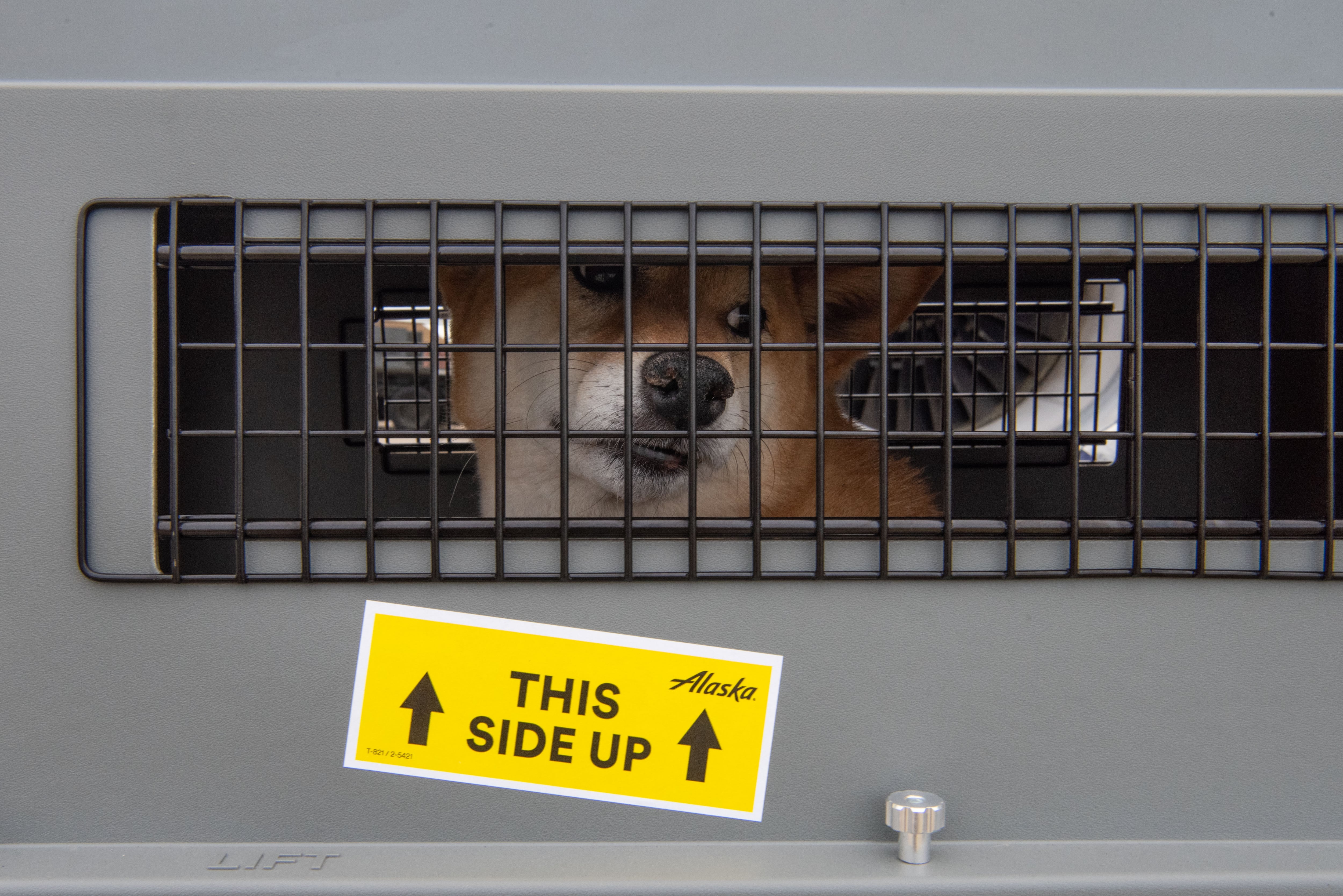In response to outcries from military families and others, government officials have revised the new rules for importing dogs from overseas to the United States, according to an announcement Monday by the Centers for Disease Control and Prevention.
The rules will still take effect Aug. 1 during the busy military moving season, and the impact of the changes is unclear. It remains to be seen whether overseas airlines will reverse their decisions to stop allowing overseas families to travel back to the U.S. with their dogs either in the cabin or as excess baggage on the plane.
The CDC rules prompted eight airlines to previously announce they will no longer fly the dogs with their owners, leaving many military families scrambling to find alternative transportation — with a number of departures scheduled in early August.
“CDC values the feedback received from various countries, industry partners, and the public,” officials stated Monday. “CDC simplified the process for meeting requirements for dogs arriving from rabies-free or low-risk countries.”
In easing some of the requirements, the CDC announced Monday that through April 30, 2025, it won’t require veterinary documents for dogs that have spent the previous six months in rabies-free or low-risk countries. The only form needed is the CDC Dog Import Form, which is completed online by the traveler or importer. This makes it easier for owners of dogs coming from low-risk countries.
There are two versions of the CDC Dog Import Form: one for dogs coming from no-to-low risk countries for dog rabies, and the other for dogs coming from high-risk countries for dog rabies. The list of high-risk countries is here. Dogs coming from those countries have more requirements, such as documentation and testing.
RELATED

The CDC requirements are aimed at preventing the introduction of dog rabies into the United States. While dog rabies was eliminated in the United States in 2007, there are over 100 countries where dog rabies isn’t controlled, according to the CDC.
Liz Hensel, a Marine Corps wife and CEO of Leave No Paws Behind USA, said she is hopeful the update will be helpful to military families. “It’s clear our voices are being heard,” said Hensel, who has been advocating for change in the rules to help military families.
However, she said, “There has to be communication between CDC and the airlines. The faster we can clarify, the better for our military families on standby for that Aug. 1 deadline.”
The CDC said it will also have a waiver process for airlines. Starting Aug. 1, airlines must create an air waybill document for each dog transported to the U.S. If they can’t create that air waybill, they can request a waiver. Unless the airlines create the air waybills or have a waiver, they can’t transport dogs as hand-carried or excess baggage to the U.S. If they are granted a provisional waiver for 90 days, they can transport dogs as hand-carried or excess baggage to the U.S. with an air waybill. They can also submit an application to apply for a longer-term waiver to last nine months.
Airlines continue to be able to transport dogs if the dog is traveling separately as manifest cargo — on its own ticket, and as in the past, creating an air waybill for the dog. But for dogs traveling as excess baggage or in the cabin with their owner, none of the airlines are currently equipped for the process of receiving dogs traveling as excess baggage or in the cabin with their own air waybill, according to Angela Passman, owner and president of World Pet Travel.
“The passenger terminal, where pets arrive as excess baggage or [to travel] in the cabin, is not connected to the cargo facilities, so they are unable to clear a pet coming into the passenger terminal,” Passman said. “They are simply not set up for this, and this is a requirement insisted upon by the CDC for bringing a pet into the continental U.S.”
If the CDC rules aren’t followed, the dog won’t be allowed to enter the U.S.
“If denied entry, your dog will be sent back to the last country of departure at your expense. Country of departure is where the last trip originated — not where the dog was born or where it lives,” officials state on the CDC’s website.
If families can’t travel with their dogs, they may be left with no alternative other than to use a pet shipper to navigate the complex requirements. While the cost for a dog to travel with the family has been around $400, it will now be more than $2,000, Hensel said, noting that the cost to ship a dog from overseas through a pet shipper could be anywhere from $2,500 to over $4,000, depending on the dog, location and other factors.
Lawmakers also urged the CDC to delay implementing the blanket requirements, as the rules affect low-risk dogs personally owned by various types of individuals.
Karen has covered military families, quality of life and consumer issues for Military Times for more than 30 years, and is co-author of a chapter on media coverage of military families in the book "A Battle Plan for Supporting Military Families." She previously worked for newspapers in Guam, Norfolk, Jacksonville, Fla., and Athens, Ga.




